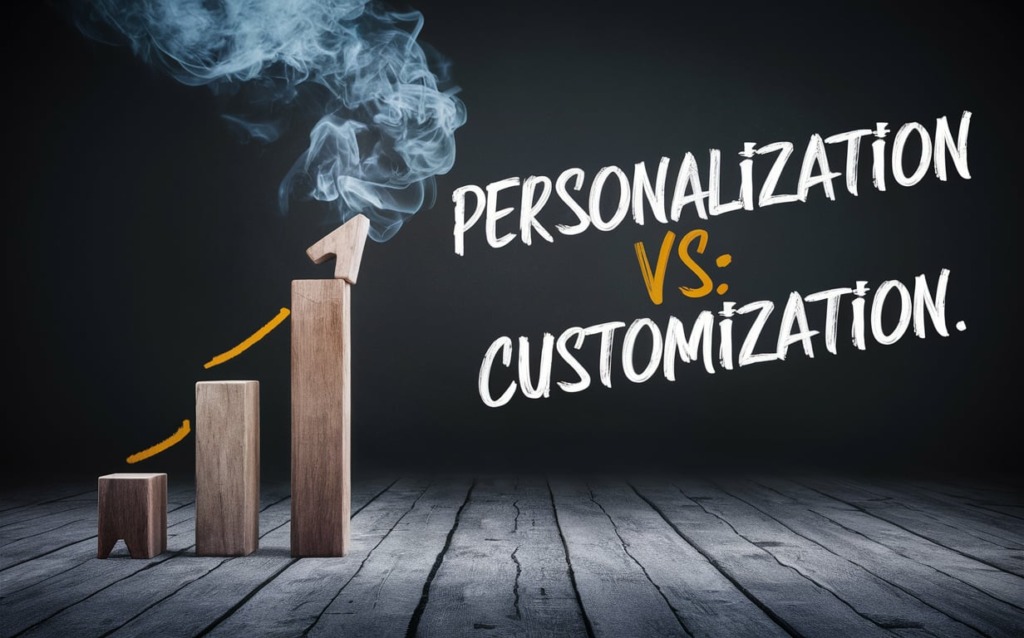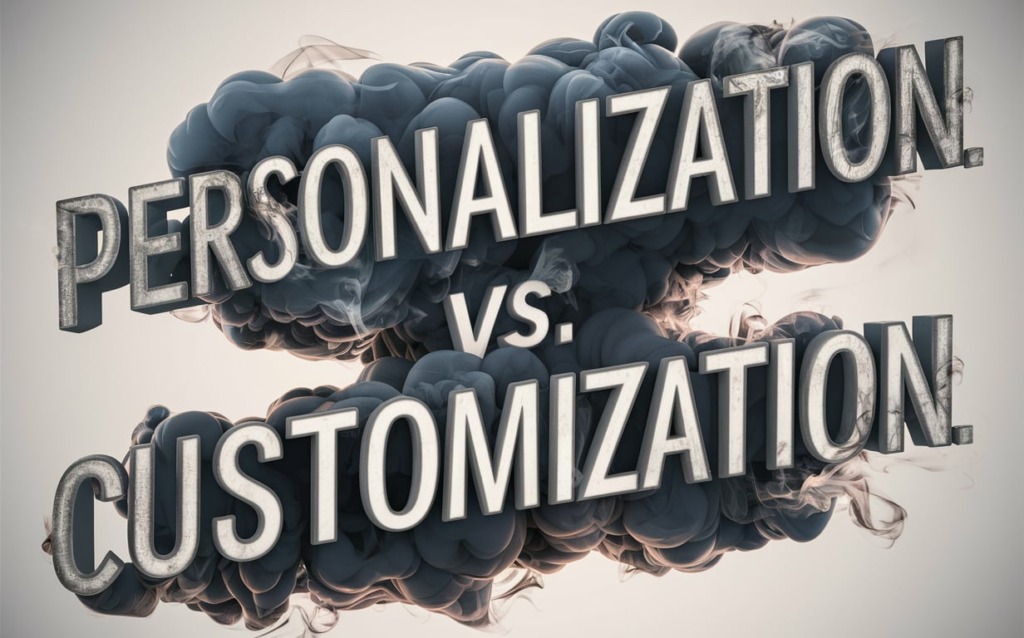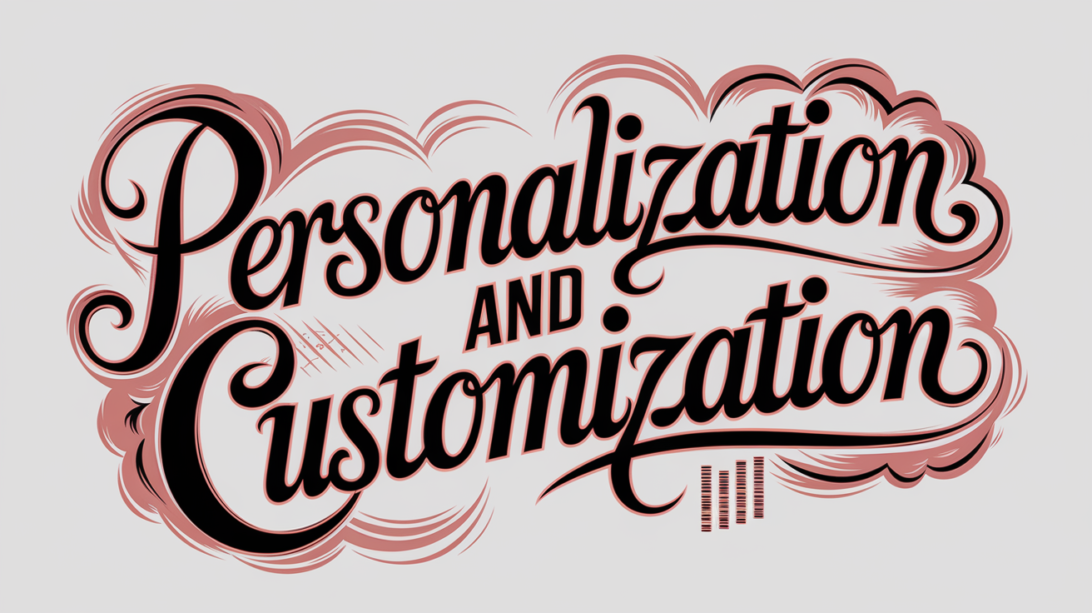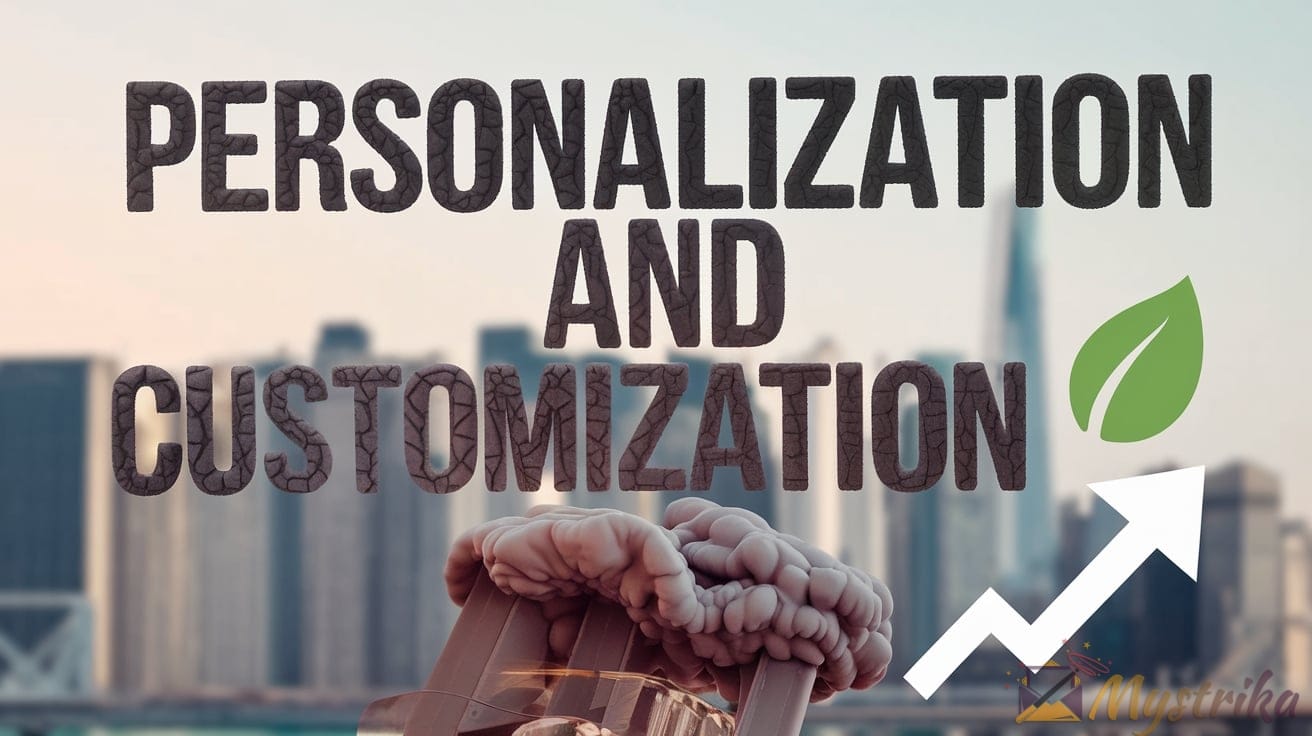Personalized or customized? Move beyond the buzzwords to truly understand how to optimize your sales strategy. Learn the core differences between personalization and customization, the benefits of both approaches, leading examples, best practices for execution, and a glimpse into the future of 1:1 sales engagement powered by data and emerging tech.
Defining Personalization and Customization
Personalization and customization are two powerful strategies for optimizing the customer experience and driving sales. But it’s important to understand the key differences between these two approaches.
Personalization – What It Is and How It Works
Personalization refers to tailoring a product, service, or message to a customer’s unique characteristics, interests, and behaviors. The goal is to provide an individualized experience that resonates more strongly with each customer.
Personalization relies heavily on collecting and analyzing customer data, including:
- Demographics – age, gender, location, income level, etc.
- Purchase history – products purchased, categories browsed, order frequency, spending habits
- Website behavior – pages visited, links clicked, search queries, abandoned carts
- Mobile app usage – features accessed, engagement metrics, in-app behaviors
- Marketing engagement – email opens, ad clicks, coupon redemptions
With the help of technology and analytics, businesses can get to know their customers on an individual level. Algorithms filter this data to deliver personalized experiences like:
- Targeted promotions – offers for products a customer has shown interest in
- Recommendations – suggestions for new products based on past purchases
- Dynamic content – changing webpage content based on user attributes and interests
- Personalized pricing – customized prices or incentives for high-value customers
Brands like Netflix, Amazon, and Spotify are masters of using data-driven personalization to engage users and influence their behaviors. For example, Netflix’s personalized recommendations for shows to watch next keep subscribers engaged for hours on end.
The key is to use data judiciously to enhance the experience, without being creepy or intrusive. Customers are savvier than ever and prize their privacy.
Customization – Giving Users Control
In contrast to personalization, customization gives customers more direct control to tailor a product or service to their needs. Rather than making assumptions or using algorithms, customization puts users directly in the driver’s seat.
Examples of customization include:
- Configurable products – Customizing options for color, size, specs, features, etc.
- Build-your-own – Mix-and-match component selection e.g. customizing a pizza
- User preferences – Saving preferred settings for future visits e.g. default language
- Recommendations – Explicitly indicating interests to refine suggestions
- Self-selection – Choosing to opt-in or out of communications
Mass customization has taken off thanks to flexible manufacturing methods and modular components. Brands like Adidas allow customers to design their own custom sneakers. Food delivery apps let users specify dietary preferences.
User-driven customization gives customers a greater sense of ownership over their experiences with a brand. Research shows [50% of consumers] are interested in purchasing customized products or services.
However, too many choices can overwhelm customers and cause decision fatigue. Businesses must strike the right balance between flexibility and a streamlined experience.
Key Differences Between Personalization and Customization
While both personalization and customization aim to provide tailored experiences, they achieve this goal through different means:
| Personalization | Customization |
|---|---|
| Data-driven using customer insights | User-driven based on explicit preferences |
| Automated using algorithms and analytics | Manual modifications made directly by user |
| Done for the customer by the business | Done by the customer themselves |
| May feel intrusive if taken too far | Gives user full control over the experience |
The ideal strategy combines the best of both worlds. For example, a business could use data to recommend a shortlist of personalized product options, and then allow the user to actively customize their final selection.
Leveraging personalization and customization together can help brands engage customers on multiple levels, driving greater satisfaction, loyalty, and sales. But getting the balance right takes careful testing and optimization.

The Benefits of Personalization and Customization
Implementing personalized and customized experiences delivers tangible benefits, from delighted customers to directly measurable business gains. Let’s explore some of the top advantages of these strategies.
Improving the Customer Experience
The top incentive for personalization and customization is to create more tailored, meaningful engagements that customers appreciate. Some key perks include:
Relevance – Products, content, and offers resonate better when aligned with each customer’s needs and interests. Personalized recommendations drive higher engagement and conversion.
Convenience – Remembering user preferences and customs settings streamlines shopping and other interactions. Customers save time and effort.
Delight – Surprising and delighting customers with experiences “meant just for them” fosters emotional connections with the brand.
Trust – Personalization and customization demonstrate that a company understands and cares about their customers as individuals. This cultivates trust and loyalty.
73% of customers prefer to engage with brands that provide personalized experiences. Thoughtful personalization makes customers feel valued as unique individuals, not generic demographics.
Driving Sales and Revenue
Beyond the soft benefits, personalization and customization directly impact key financial metrics:
Higher conversion rates – Tailored product recommendations convert 6 to 10 times better than generic suggestions. Personalized emails deliver transaction rates 6x higher than blasts.
Bigger order values – Customers receiving personalized product suggestions add 35% more items to their carts. Personas respond better to incentives aligned with their price sensitivity.
Improved retention – Customers are 50% less likely to churn after a personalized shopping experience. Loyalty program tiers based on purchase history retain VIP spenders.
New revenue opportunities – Data and analytics uncover latent needs to offer cross-sells and upsells. Customization opens new markets as niche segments are addressed.
Starbucks mobile app is a popular example. Customers create customized drink recipes, pay via mobile wallet, and accrue rewards – all driving higher spend.
Increasing Customer Satisfaction and Retention
Satisfied customers are loyal customers. Personalization and customization directly correlate with higher satisfaction scores:
- 63% of customers are more satisfied when brands provide personalized offers and suggestions.
- 72% say customized products make them more likely to buy from a retailer again.
- 52% of online shoppers say they get frustrated when shown irrelevant content.
Personalization reduces churn by giving customers “their” experience. Customization allows them to control it. Together, they demonstrate the brand truly understands each customer.
Personalization in Action
Let’s explore some examples of personalization tactics used to drive business success:
Product Recommendations
Netflix, Amazon, Sephora, and other retailers use purchase history, browsing data, and machine learning algorithms to generate hyper-relevant recommendations. 75% of what people watch on Netflix comes from personalized recommendations driving engagement.
Targeted Ads and Campaigns
Platforms like Facebook let advertisers target customers by location, demographics, interests, behaviors, and more. Targeted campaigns convert at 660% higher rates than generic ads.
Personalized Pricing and Promotions
Uber dynamically prices rides based on demand, time of day, special events, and other real-time factors. Customers pay based on personalized circumstances vs fixed pricing.
Personalized Content
Publishers like Buzzfeed serve different homepage content to users based on their reading history and interests. Reading time and social sharing improve when content aligns with preferences.
These are just a few examples of data-driven personalization in action. The key is to always serve the individual user with relevance vs blasting the masses.
Customization in Action
Now let’s look at some customization use cases giving users more control:
Customizable Products
Nike’s custom sneakers, Adidas’ mi adidas line, and RayBan’s customizable sunglasses let users select colors, materials, engraved text, and other options to create one-of-a-kind products aligned with their personal style.
Self-Service Platforms
Apps like Taco Bell and Subway put users in the driver’s seat with build-your-own meal options. Financial tools let users customize dashboards with preferred widgets and data displays.
Explicit Preferences
Streaming platforms allow users to indicate favorite genres, artists, and interests to receive better recommendations. News sites let users specify topics of interests for a personalized newsfeed.
Flexible Subscriptions
Subscription services like Dollar Shave Club allow customers to specify how frequently, what exact products, and the quantity they receive in each shipment.
The customization options are endless. The key is giving users a sense of control while still guiding them to effective choices aligned with business goals.

Best Practices for Implementation
Getting personalization and customization right involves careful planning, strategic technology investments, and ongoing optimization. Here are some top tips for rolling out these tactics successfully:
Collecting Customer Data and Insights
Personalization relies heavily on customer data. Key best practices include:
First-party data is king – Collect zero-party data like surveys and preferences. Transactional data like purchases and website activity provides accurate ground truth. Augment where needed with third-party data.
Consolidate data – Unify data from all touchpoints into a central CRM or customer data platform. Eliminate data silos to gain a complete view.
Clean datasets – Scrub data to remove incomplete, duplicate, and outdated entries. Quality data drives quality personalization.
Analyze and segment – Identify high-value clusters like big spenders and loyalty program members. Define audience microsegments with common needs.
Ethical collection – Clearly communicate data usage. Make opt-outs easy. Anonymize datasets where possible. Follow regulations like GDPR.
Ongoing capture – Continuously collect and analyze new data like purchases, web visits, call center interactions etc. Preferences evolve so insights must stay current.
With rich, recent, and organized customer data, personalization engines have the fuel they need to deliver.
Choosing the Right Technologies and Tools
The technical side of personalization and customization includes:
CRM – Most CRM systems like Salesforce include analytical features to track customer data and behavior. CRM insights drive personalization.
Data platforms – Customer data platforms like Adobe Real-Time CDP centralize data for analysis and segmentation to activate personalization across channels.
Predictive analytics – Machine learning models identify trends and patterns in data to predict customer needs and serve personalized recommendations.
Marketing automation – Platforms like Mailchimp allow segmenting contacts to deliver personalized messaging and promotions via customized journeys.
Testing tools – A/B testing and experimentation tools like Optimizely refine personalization approaches by testing engagement with different segments.
Experience platforms – DXPs like Sitecore combine analytics with content delivery to serve personalized experiences across channels and touchpoints.
Tag management – Deploy scripts across sites/apps to collect visitor data for analysis. Data layer integration is key.
Choose platforms tailored to your technical expertise, resources, and existing martech stack.
Testing and Optimizing Over Time
Personalization is an ongoing process of refinement, not a one-time initiative. Critical activities include:
Start small – Roll out initial personalization features for a limited audience to proof the concept and process before going wide.
Measure KPIs – Define key metrics for success upfront. Track performance data like conversion rates to quantify personalization impact.
Iterate and improve – Experiment frequently with messaging variations, incentive amounts, algorithm tweaks, segment definitions, and more to hone in on what resonates.
Monitor customer feedback – Survey users directly on their perception of personalization relevance. Complaints about “creepy” messages indicate misalignment.
Give users control – Provide preferences and controls allowing customers to opt out or dial up/down personalization frequency.
Watch for decay – Monitor performance over time. Refresh algorithms and data sets periodically to avoid decay.
Attribution modeling – Analyze customer journeys to attribute conversions across channels. Refine strategies accordingly.
Privacy compliance – Continuously evaluate data practices and personalization mechanisms for compliance with evolving regulations.
With ongoing optimization, you can maximize personalization value while avoiding common pitfalls like message fatigue.
Respecting Customer Privacy and Transparency
With personal data driving these efforts, privacy and transparency considerations are essential:
- Share details upfront – Explain what data is collected, how it’s used, and what value customers get in exchange via privacy policies and notices.
- Honor user choices – Provide easy opt-in and opt-out of data collection. Don’t force unwelcome personalization.
- Anonymize data – Scrub personally identifiable information from datasets where possible.
- Secure data – Follow best practices for safely collecting, storing, and using data. Prevent breaches.
- Contain data – Avoid sharing data with third parties not directly involved in delivering personalized experiences.
- Offer access – Provide ways for customers to access their data you’ve collected upon request. Be transparent.
- Plan for deletion – Support consumer data rights like the right to be forgotten. Allow customers to delete their data.
- Review compliance – Consult with legal/compliance teams to ensure personalization data practices adhere to GDPR, CCPA and other regulations.
Gaining customer trust is crucial. Take a privacy-first approach and provide plenty of control to earn it.

The Future of Personalization and Customization
Personalization and customization continue to evolve at a rapid pace. Exciting emerging technologies will unlock even more capabilities in the years ahead.
Emerging Technologies to Enable Better Personalization
Several innovations will help businesses serve customers in smarter, more predictive ways:
Predictive analytics – More advanced machine learning algorithms will enable real-time predictive modeling of customer needs and intentions. Models will be more accurate, granular, and scalable.
Contextual awareness – Leveraging inputs like locational data and calendar events will allow greater personalization based on real-world context vs past behaviors alone.
Expanded data sources – Wearables, IoT sensors, connected vehicles/homes, and biometrics provide new signals for understanding customer needs and tailoring to them.
Hyper-segmentation – Platforms will allow micro-segmenting users into more refined clusters for nuanced personalization strategies.
Omnichannel integration – Unifying data and coordinating personalization across channels will eliminate disjointed experiences as customers switch touchpoints.
Customer data platforms – As CDP adoption grows, marketer access to complete, actionable customer profiles will transform the ability to personalize seamlessly.
Automated optimization – AI will automatically test and refine elements like messaging, channel timing, algorithm parameters, and segment definitions to perpetually hone personalization.
As technology removes limits on data, insights, and activation, the potential to serve customers in customized ways will skyrocket.
The Role of AI and Machine Learning
Artificial intelligence and ML in particular will be the true game changer. Use cases include:
Hyper-personalized product recommendations – Advanced collaborative filtering algorithms analyze numerous signals to model interest/affinity and serve extremely tailored suggestions.
Lifelike chatbots – NLP models enable conversational bots to deliver personalized interactions, recommendations, and services with human-like rapport.
Lookalike modeling – Identifying other customers with similar DNA to tailor communications and offers to their cohort’s preferences.
Predictive churn – ML uncovers signals correlated with churn risk and triggers proactive personalization to retain customers.
Lifetime value modeling – Understanding predicted customer LTV enables personalizing engagement, incentives, and services commensurate with revenue potential.
Customer journey optimization – ML maps micro-segments to optimized journeys and adapts in real time as interactions occur.
AI will unlock personalization at a scale, depth, and automation level impossible through manual methods alone.
New Opportunities for Customization
Emerging technologies will also enable new forms of customization, including:
Digital twins – Customers can potentially preview and refine products in augmented or virtual reality before purchasing.
Co-creation – Platforms may allow collaborating with designers to create bespoke physical products or digital experiences.
Smart devices – Wearables, appliances, vehicles, and homes could adapt in real time based on biometric data and explicitly set preferences.
Voice customization – Voice assistants may capture verbal preferences on media, products, services, and information to deliver hyper customized experiences.
AR/VR custom spaces – Customizable avatars, landscapes, and virtual spaces calibrated to user preferences might transport users into personalized environments.
Blockchain verification – Secure digital ledgers could give customers control over sharing validated information like identity attributes to enable customization by trusted entities.
Technology will provide many new ways for customers to explicitly shape their own experiences.

Key Takeaways: Personalization vs. Customization for Sales
Optimizing your sales strategy using personalization and customization provides immense benefits, but it’s crucial to execute these tactics effectively. Here are the key takeaways:
- Personalization leverages customer data to curate tailored experiences, while customization gives users direct control to modify products and services.
- Both approaches aim to provide individualized experiences, but personalization is automated while customization is manual.
- Benefits include improved customer satisfaction, stronger brand affinity, higher conversion rates, bigger order values, and increased retention.
- Personalization activates using data-driven recommendations, targeted ads and content, and personalized pricing. Customization empowers via self-service platforms, configurable products, and flexible subscriptions.
- To implement successfully, focus on first-party data, integrated martech tools, privacy and transparency, systematic testing, and continuous optimization.
- Emerging technologies like predictive analytics, omnichannel integration, and AI will unlock hyper-personalization and new customization opportunities.
- The most effective strategy blends personalized recommendations with custom controls to engage customers on multiple levels.
- When executed judiciously, personalization and customization can transform sales engagement, lift key business metrics, and deliver memorable customer experiences.
The key is understanding your customers, setting clear goals, choosing complementary strategies, and continuously refining execution. With personalization and customization powering your sales strategy, you can provide customized experiences that boost revenue while making customers feel valued as individuals.
Frequently Asked Questions
What are some examples of personalization in sales?
- Targeted promotions and recommendations based on purchase history
- Dynamic pricing customized to user attributes and behaviors
- Personalized email sequences tailored to prospect stage
- Web experiences adapted based on browsing history
- Custom recommendation engines like Netflix and Amazon
- Location-based incentives when users are nearby
What are some examples of customization in sales?
- Allowing product configuration with customizable options
- Self-service platforms to build/design own solutions
- Letting users select subscription frequency and products
- Wish lists and favorites to indicate preferences
- User-generated avatars and profiles
- Interfaces with customizable widgets and layouts
- Co-creation opportunities to work directly with designers
Should businesses focus on personalization or customization?
The most effective strategy uses both personalization and customization together. Personalized recommendations and automated experiences should be blended with ample custom controls. The ideal mix depends on your business model and customer expectations.
How does personalization differ from segmentation?
Segmentation divides customers into groups based on common attributes. It is useful for targeted campaigns but results in the same static experience for each segment member. Personalization uses individual data to tailor a unique experience per customer. It is more granular and adaptable than segmentation.
What technologies enable personalization and customization?
Key enabling technologies include:
- CRM systems to unify customer data
- Customer data platforms to create 360-degree views
- Predictive analytics and machine learning algorithms
- Marketing automation platforms for tailored campaigns
- Testing and optimization tools to refine approaches
- Experience orchestration systems to coordinate personalization
- Tag management for collecting behavioral data
What are the risks and challenges with personalization?
- Privacy concerns if transparency and controls aren’t provided
- Inaccurate or outdated data degrading personalization quality
- Message fatigue if personalization feels repetitive or invasive
- Resource requirements for technology and data management
- Difficulty tracking ROI across customer journeys
- Compliance considerations around regulated data usage

